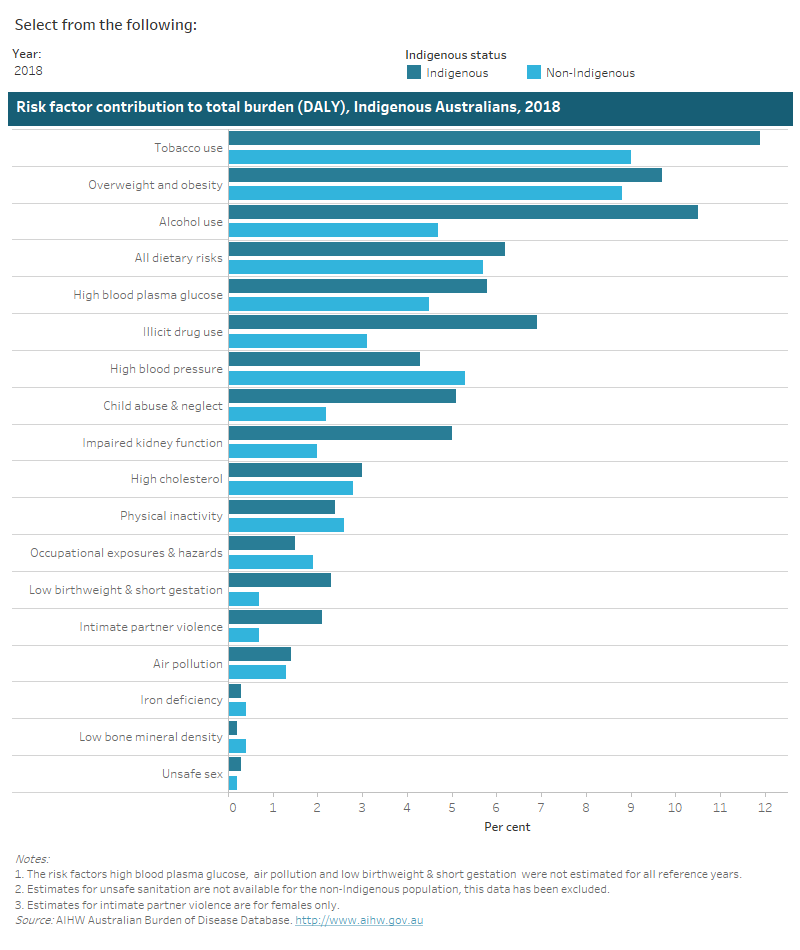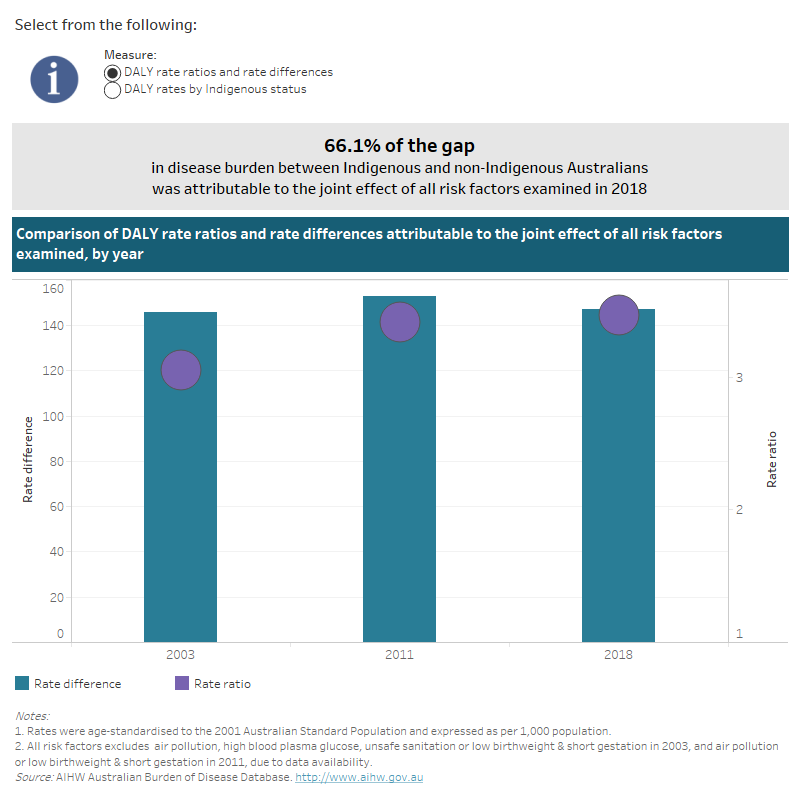Gap in health outcomes for burden attributable to risk factors
This section presents the contribution of each risk factor to the total health gap as measured by the age-standardised DALY rates, rate ratios and rate difference between Indigenous and non-Indigenous Australians. Using age-standardised rates takes into account the differences in the sizes and age distributions of the 2 populations.
Due to the interactions between risk factors, it is not possible to simply sum the impact of each risk factor (see ‘Chapter 5 Contribution of risk factors to burden’ in ABDS 2018: Impact and causes of illness and death in Aboriginal and Torres Strait Islander people). Estimates of the combined impact of risk factors, taking interactions between them into account, are presented on this page as the ‘joint effect’.
Further, the risk factors included in the study represent only a subset of all possible risk factors that may contribute to disease burden. As such these statistics do not represent a measure of the contribution of all risk factors to the overall health gap between Indigenous and non-Indigenous Australians.
In 2018, tobacco use, overweight (including obesity) and alcohol use were among the top 3 contributors to the total burden (DALY) for Indigenous and non-Indigenous Australians. High blood plasma glucose and impaired kidney function contributed more to the total burden for Indigenous Australians, while high blood pressure and occupational exposures & hazards contributed more for non-Indigenous Australians.
Use the interactive graph below to explore the contribution risk factors made to the total burden (DALY) for Indigenous and non-Indigenous Australians.
This interactive data visualisation shows the contribution of each risk factor to total burden by Indigenous status. The main section shows horizontal bar graphs which can be customised to report the contribution by year.

How has disease burden due to attributable risk factors changed over time?
Between 2003 and 2018, the age-standardised rate of disease burden attributed to several key risk factors, including high blood pressure, high cholesterol, impaired kidney function, physical inactivity, overweight (including obesity) and tobacco use, declined for both Indigenous and non-Indigenous Australians.
Between 2003 and 2018, there was a narrowing in the health gap (decrease in both the DALY rate ratio and rate difference) for physical inactivity, occupational exposures & hazards, and low bone mineral density—indicating declines observed for the Indigenous population were greater than for the non-Indigenous population.
Use the interactive graph below to compare the contribution of risk factors to the gap in total burden (DALY) between Indigenous and non-Indigenous Australians by year and risk factor.
For more information on changes in the risk factors contributing to the gap see Chapters 7 in the ABDS 2018: impact and causes of illness and death in Aboriginal and Torres Strait Islander people report.
Tab 1: This interactive data visualisation shows the contribution risk factors had on the gap in health outcomes, or total burden (DALY), between Indigenous and non-Indigenous Australians. There are two sections, the first is key text which reports the risk factor contribution to the gap in disease burden in 2018. The second section is a column graph which can be customised using the filter to report age-standardised DALY rates by year and Indigenous status, or DALY rate differences and rate ratios by year.
Tab 2: This interactive data visualisation shows the DALY rate differences and ratio ratios of each risk factor. The main section shows horizontal bar graphs which can be customised using the filter to report age-standardised DALY rates by year and Indigenous status, or DALY rate differences and rate ratios by year.



